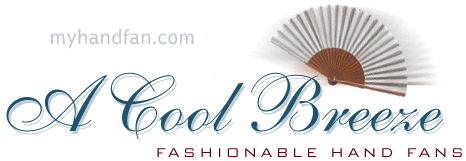Hand fans and flamenco dance are intimately intertwined, as hand fans play a significant role in the visual and artistic expression of this passionate and vibrant Spanish dance form. The use of hand fans in flamenco adds an element of drama, emotion, and storytelling to the performances. Here's a closer look at the relationship between hand fans and flamenco:
Symbolism and Tradition: Hand fans have been an integral part of Spanish culture for centuries, representing elegance, femininity, and grace. In the context of flamenco, hand fans are not only used as accessories but also as storytelling tools. Each movement of the fan can convey a range of emotions, from coquettish flirtation to intense passion. The fan becomes an extension of the dancer's body, enhancing the dance's expressive power.

Adding Drama to Performances: Flamenco is known for its intense emotions and dramatic storytelling. Hand fans complement this drama by allowing dancers to communicate emotions with subtlety and precision. The fan's graceful opening and closing, flicks, and spins create a mesmerizing visual spectacle that captures the audience's attention.

Source: porsolea.com
Integral to Choreography: In traditional flamenco choreography, specific movements are dedicated to using the fan. These movements are carefully synchronized with the music and the dancer's steps, creating a harmonious fusion of visual and auditory art. The fan becomes an essential element of the choreography, contributing to the dance's rhythm, pace, and narrative

Coreography with fans. Source: diariodealmeria.es
Expressing a Range of Emotions: Different fan movements are associated with various emotions and scenarios. For example, a slow and controlled opening and closing of the fan might symbolize mystery and intrigue. A rapid flick of the fan could convey excitement or surprise. By mastering these fan techniques, flamenco dancers can tell nuanced stories and evoke a spectrum of feelings.

Dancer Sara Baras dancing with a fan during her performance in New York. Source: diariodecadiz.es
Traditional Attire: Flamenco dancers often wear traditional attire, which includes elaborate dresses, shawls, and accessories. The hand fan is one of these essential accessories. The fan's design, colors, and embellishments can complement the dancer's costume, enhancing the overall visual impact of the performance.

Source: elflamencoensevilla.com
Flamenco Fan Styles: There are different fan styles within flamenco that correspond to different regions and dance forms. For instance, the "abanico abanico" or "abanico clásico" is a fan style often associated with classical flamenco dances. The "abanico de raso" is a silk fan typically used in traditional Sevillanas dances.

Abanico clásico. Source: porsolea.com
Evolution in Modern Performances: While hand fans have deep roots in flamenco tradition, modern flamenco performances have also incorporated innovative interpretations of fan movements. Contemporary dancers experiment with new techniques and choreography, pushing the boundaries of fan use while still paying homage to tradition.

Source: notikumi.com
The marriage of hand fans and flamenco dance exemplifies the fusion of cultural elements that contribute to the uniqueness of this art form. The fan's grace and versatility enhance the emotional impact of flamenco, allowing dancers to convey the depths of human experience through the flick of a wrist and the flutter of a fan. It's a testament to the enduring power of artistic expression and the synergy between movement and symbolism.
